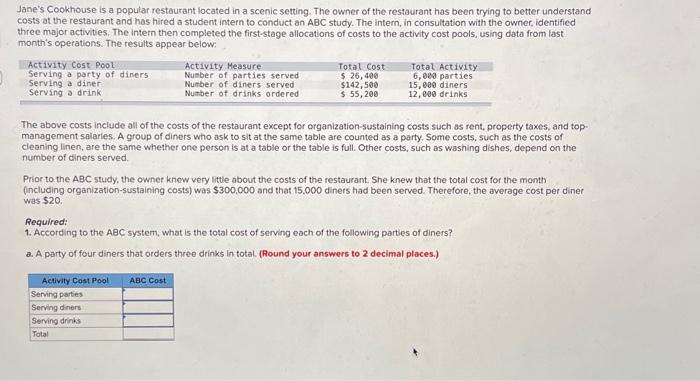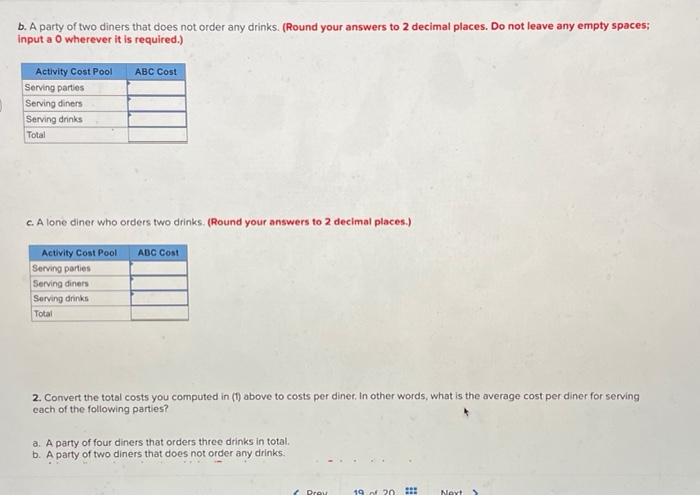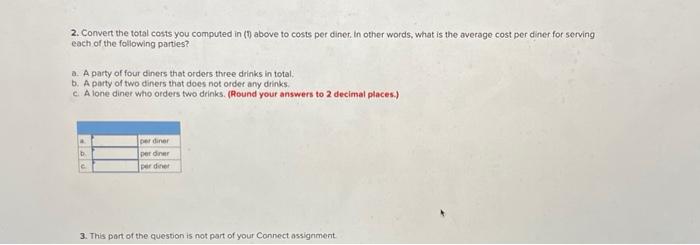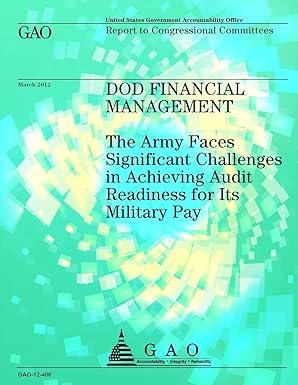b. A party of two diners that does not order any drinks. (Round your answers to 2 decimal places. Do not leave any empty spaces; input a 0 wherever it is required.) c. A lone diner who orders two drinks. (Round your answers to 2 decimal places.) 2. Convert the total costs you computed in (1) above to costs per diner, In other words, what is the average cost per diner for serving each of the following parties? a. A party of four diners that orders three drinks in total. b. A party of two diners that does not order any drinks. Jane's Cookhouse is a popular restaurant located in a scenic setting. The owner of the restaurant has been trying to better understand costs at the restaurant and has hired a student intern to conduct an ABC study. The intern, in consultation with the owner, identified three major activities. The intern then completed the first-stage allocations of costs to the activity cost pools, using data from last month's operations. The results appear below: The above costs include all of the costs of the restaurant except for organization-sustaining costs such as rent, property taxes, and topmanagement salarles. A group of diners who ask to sit at the same table are counted as a party. Some costs, such as the costs of cleaning linen, are the same whether one person is at a table or the table is full. Other costs, such as washing dishes, depend on the number of diners served. Prior to the ABC study, the owner knew very little about the costs of the restaurant. She knew that the total cost for the month (including organization-sustaining costs) was $300,000 and that 15,000 diners had been served. Therefore, the average cost per diner was $20. Required: 1. According to the ABC system, what is the total cost of serving each of the following parties of diners? a. A party of four diners that orders three drinks in total. (Round your answers to 2 decimal places.) 2. Convert the total costs you computed in (0) above to costs per diner. In other words, what is the average cost per diner for serving each of the following parties? a. A party of four diners that orders three drinks in total. b. A party of two diners that does not order any diinks. c. A lone diner who orders two drinks. (Round your answers to 2 decimal places.) 3. This part of the question is not part of your Connect assignment









